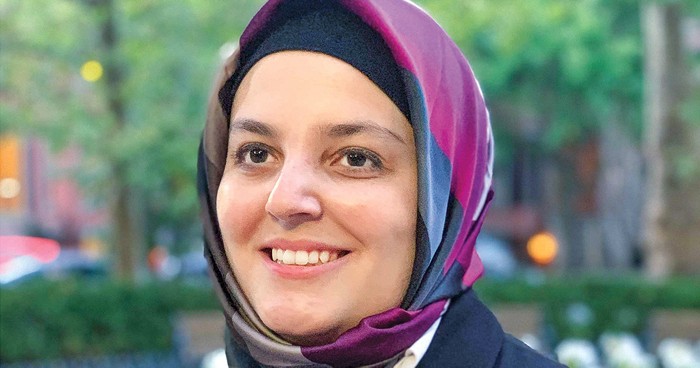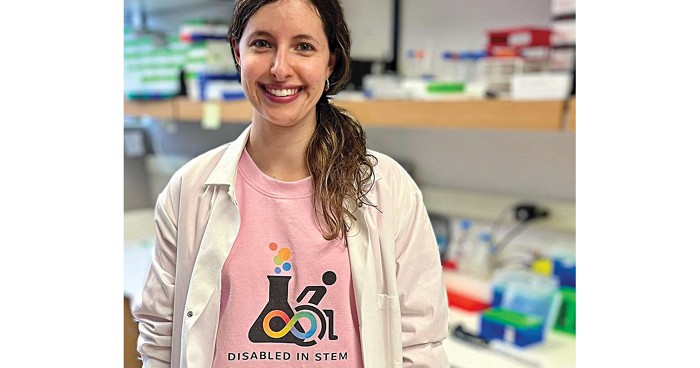Advertisement
Grab your lab coat. Let's get started
Welcome!
Welcome!
Create an account below to get 6 C&EN articles per month, receive newsletters and more - all free.
It seems this is your first time logging in online. Please enter the following information to continue.
As an ACS member you automatically get access to this site. All we need is few more details to create your reading experience.
Not you? Sign in with a different account.
Not you? Sign in with a different account.
ERROR 1
ERROR 1
ERROR 2
ERROR 2
ERROR 2
ERROR 2
ERROR 2
Password and Confirm password must match.
If you have an ACS member number, please enter it here so we can link this account to your membership. (optional)
ERROR 2
ACS values your privacy. By submitting your information, you are gaining access to C&EN and subscribing to our weekly newsletter. We use the information you provide to make your reading experience better, and we will never sell your data to third party members.
Diversity
Japan’s chemical industry inches toward gender diversity
Companies are taking steps to promote women, but change is slow in coming
by Katsumori Matsuoka, special to C&EN
January 2, 2021
| A version of this story appeared in
Volume 99, Issue 1

In October 2002, when Kanako Fukuda was asked to transfer from what was then Sumitomo Chemical’s Osaka Laboratory to the Japanese company’s Tokyo headquarters, an older male colleague was dismissive about her prospects.
“What a pity,” Fukuda recalls the colleague saying. “The Tokyo head office is very demanding, so a woman cannot handle a position there.”

In fact, Fukuda thrived in Tokyo and is now one of the firm’s executive officers. And when Fukuda moved to Belgium last year to become vice president of the chemical company’s European business, no one expressed any concerns about her abilities. In fact, she mostly remembers being congratulated and encouraged by her Japanese colleagues.
Fukuda advanced to the top ranks of a chemical company in a country notorious for resistance to gender diversity. The government of Prime Minister Shinzo Abe, who left office in September, pushed to change this with “womenomics,” his policy to get Japan’s women into the workforce, including 30% of management positions in government and industry. Women are increasingly being promoted to managerial roles as more and more companies commit to boosting the representation of women in their leadership ranks, in part through concrete diversity targets.
But the pace of change is slow. In the US chemical industry, women hold more than 37% of middle-manager positions, according to 2018 statistics from the US Equal Employment Opportunity Commission. Japan does not keep similar industry-level statistics, but Japan’s Ministry of Health, Labor, and Welfare reports that in 2019, women held just 8.0% of managerial positions in the manufacturing sector overall, well below the government’s 30% goal.
And self-reporting by companies indicates that the chemical industry may lag behind the rest of the manufacturing sector. At chemical firms that have received the government designation of Nadeshiko Brand for encouraging women’s success in the workplace—the companies that presumably are the industry’s gender diversity leaders—the share of middle-manager positions held by women is no more than 6%. And there are even fewer women in the executive suite: Fukuda is, by C&EN’s tally, one of only a few female executive officers in Japan’s chemical industry.
Company leaders realize that this state of affairs must change. “As Japan ages and the labor market shrinks, workplaces where women cannot take an active part are handicapped,” says Karola Japke, chief human resources officer at the Japanese chemical maker Teijin. “A company discriminating against women will not do well in the labor market.”
A native of Germany, Japke joined Teijin in 2001. At the time, she was part of a tiny fraction of women with managerial roles in the industry.
Teijin provides a good illustration of both the efforts being made in corporate Japan and the slow rate of change. The company decided in 2000 to get serious about gender diversity. It went at it on four fronts: employ more women, reform HR practices, change the corporate culture, and promote a better work-life balance. “We are taking a wide variety of measures,” Japke says.
Numerical targets have helped Teijin move in the right direction. Since 2001, at least 30% of the company’s new hires must be women, a mandate that has led to increased diversity in the managerial ranks. Currently, Teijin has 116 female managers, accounting for about 4.8% of its total, up from 3.7% in 2015. The company aims for 300 female managers by 2030.
To make the company more parent friendly, Teijin launched policies in 2017 that allow employees with children in primary school to leave work earlier. And Japke wants to modify its appraisal system so that women who take time off after having a child aren’t penalized. Today, women who take maternity leave lose about a year of seniority on their employee records.
Playing catch-up

So far, Teijin hasn’t launched a mentoring system, a step that experts say is critical to achieving gender and ethnic diversity in the labor force. But that is coming this year. Initially, mentoring will focus on young women who are management trainees. And since 2011, Teijin has run a program called Empowerment Women Advancement that provides intense training to promising female staffers.
Teijin’s persistence has not gone unnoticed. In 2018, Japan’s Ministry of Economy, Trade and Industry (METI) named Teijin a Nadeshiko Brand company. METI officials encourage investors to put their money in companies whose gender diversity policies have earned them the title.
Depending on one’s perspective, firms in the Nadeshiko Brand program can be lauded for their gains or lambasted for their slow progress. For example, the percentage of women in Sekisui Chemical’s managerial ranks was only 5.7% in 2019, but that’s up from 2.9% 5 years before. Likewise, only 5.1% of the managers at the specialty chemical firm DIC were women, but that’s more than double the level of 5 years earlier.
Achieving better gender balance is becoming critical in Japan, says Atsushi Osanai, a professor at Waseda Business School. “Young people in Japan are changing rapidly,” he says. “If companies are slow to change their employment practices, they will miss out on young people with fluent English who won’t hesitate to look abroad for better opportunities.” Failure to attract talented women, he adds, can sap companies of the innovation that is known to stem from diversity. “Management’s resolve” is critical to corporate success in achieving diversity, Osanai says.
At Sumitomo, Fukuda says the company has taken several steps to improve its gender diversity in the 18 years since she found herself the target of sexist comments. In 2007, it started to identify promising young female recruits and send them for management training outside the company. This practice was followed in 2013 by the launch of a formal mentoring system aimed at encouraging Sumitomo’s younger female managers.
In 2019, Sumitomo raised the stakes. The company put its diversity and inclusion (D&I) targets on an equal footing with key business performance metrics, such as digital transformation and technical development. The program pushes company leaders to raise the percentage of women managers from 5.8% in 2019 to more than 10% within 3 years.
Some companies go beyond targets and mentoring programs to address ingrained cultural habits. The opening of day-care centers on Sumitomo’s premises has led to a change of outlook among Fukuda’s male colleagues regarding traditional gender roles, she says. “It has become normal at headquarters to see employees entering the childcare facility with their young children—not only mothers, but fathers as well,” she says. “Attitudes are changing.”
Along similar lines, Sumitomo has tasked management with raising the proportion of new fathers requesting paternity leave to more than 70%, from 45% currently. Sumitomo isn’t alone in pursuing that goal. Starting in 2014, Teijin has sent letters to all new fathers recommending that they request a leave. Since then, the share of new dads requesting paternity leave at Teijin has surged from 7% to 40%.
The acronym D&I started to gain prominence in Japanese companies in 2015. That was the year Japan began adopting the Act on Promotion of Women’s Participation and Advancement in the Workplace. The new law was a boon to HR consultants.
“We received a rush of orders related to involvement with D&I,” recalls Yuki Ota, senior managing director of Cicom Brains, a Tokyo-based HR consulting firm. “Our first recommendation to several clients was to remove unconscious bias and boost women’s self-confidence.”
Since 2015, the commitment of Japanese companies to D&I has varied widely, according to Ota. Some firms, she says, have made thorough efforts to understand the obstacles women face in their careers and have set hard numerical targets for their managers. But others, after failing to meet targets, “have stopped promoting gender diversity,” she says, and instead emphasize work-life balance.
On the whole, Ota says, Japanese industry has come to realize that more-diverse companies are better companies. She says most Japanese managers now believe that the inclusion of women in important company projects leads to better outcomes. Whereas in the past, Japanese firms might have valued homogeneity, “a lot of value is now placed on differences, demographic diversity, and a variety of opinions so that workers can generate and discuss a wider variety of ideas,” she says.
Sumitomo’s Fukuda says she was selected to go to Brussels mostly because of her relevant experience. She had worked in international sales of energy and performance materials, creating a team made up of staff from different nationalities and based in several countries. It wasn’t always smooth sailing. Friction emerged on the team that might not have occurred in a more homogeneous Japanese setting. “We argued in English,” Fukuda recalls.
But managing the team, she says, “has made me keenly appreciate the challenge of the language barrier as well as the cultural aspects of how things are done differently in other countries.” Working together, the team expanded international sales of Sumitomo products, Fukuda notes.
In contrast with the sexism she experienced in her career, her international leadership roles have been empowering, Fukuda says. She used to fear her male colleagues’ veiled criticism if she dared take the annual leave she was entitled to. “It took a lot of courage to take a 1-week leave,” she recalls. Although Japan has far to go to achieve gender diversity, those days, at least, appear to be gone.
Katsumori Matsuoka is a freelance writer based in Japan.




Join the conversation
Contact the reporter
Submit a Letter to the Editor for publication
Engage with us on Twitter